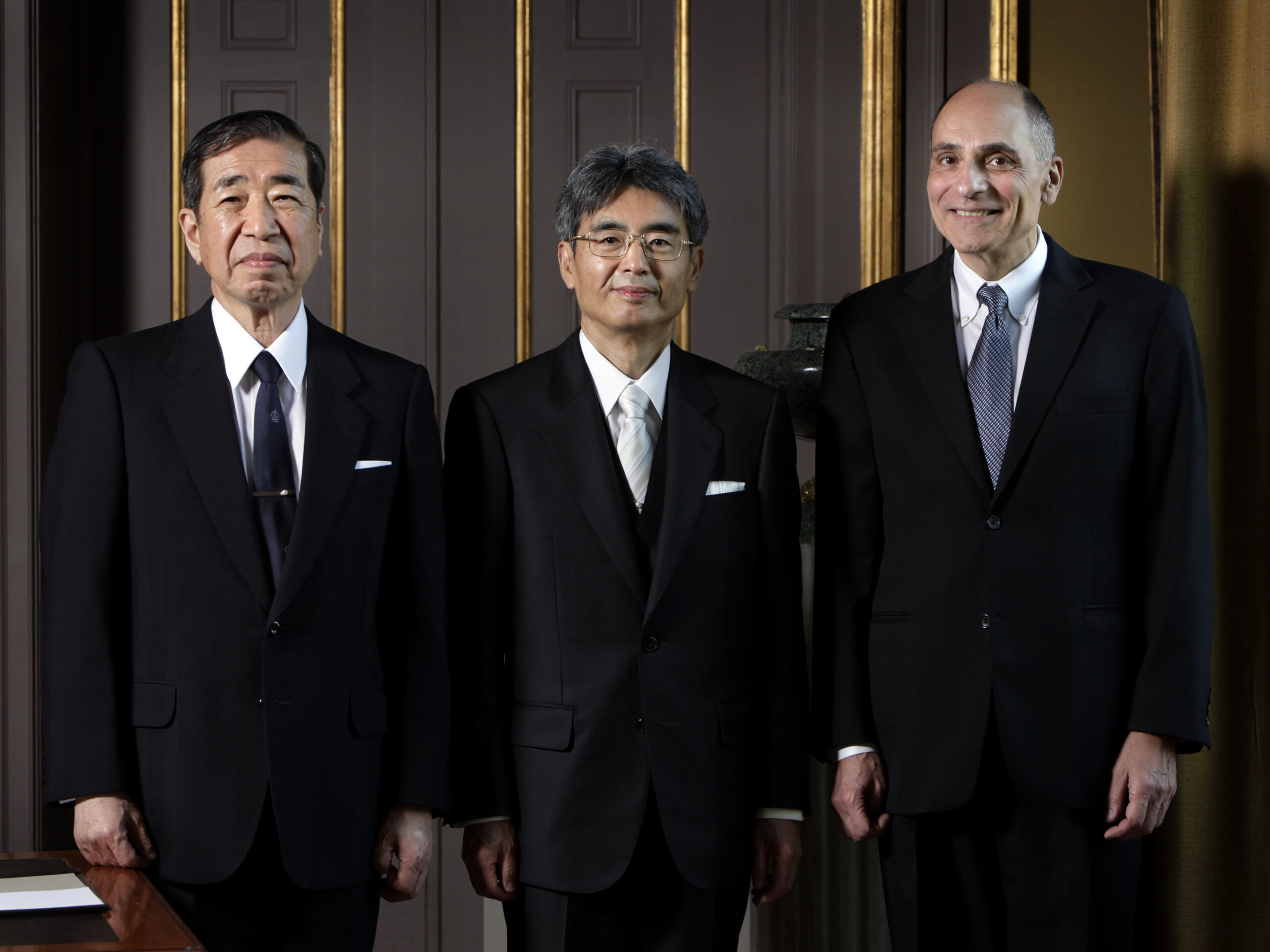The Royal Swedish Academy of Sciences has decided to award the Crafoord Prize in Polyarthritis 2009 jointly to Charles Dinarello, University of Colorado School of Medicine, Denver, USA, Tadamitsu Kishimoto, Graduate School of Frontier Biosciences, Osaka University, Japan and Toshio Hirano, Graduate School of Medicine, Osaka University, Japan, “for their pioneering work to isolate interleukins, determine their properties and explore their role in the onset of inflammatory diseases”.
Targeted (‘smart´) drugs to save joints
This year´s Crafoord Prize laureates discovered two new key players in the immune system of the human body: the signal substances interleukin-1 (IL-1) and interleukin-6 (IL-6). Child and adult joint-disease sufferers often have high concentrations of these substances in their bodies. Activated by these substances, the immune system then starts to break down cartilage and bone. But new drugs can stop this merciless process.
When the powerful human immune system goes wrong, turning against a person´s own body (an ´autoimmune´ reaction), the results are painful and sometimes even life-threatening. In polyarthritis the immune system attacks the joints, slowly but surely eroding them. Today, tens of millions live with the commonest form of polyarthritis: rheumatoid arthritis. Juvenile chronic arthritis is also common, as are gout, psoriatic arthritis and Bechterew´s disease — all forms of polyarthritis.
The discoveries made in the 1970s and ´80s by this year´s Crafoord Prize laureates have opened up new areas of research. It has paved the way for drug development that is now helping polyarthritis patients to avoid the painful course of their disease. Charles Dinarello, Tadamitsu Kishimoto and Toshio Hirano isolated two signal substances in the immune system, IL-1 and IL-6. These substances are released from white blood cells.
In a healthy immune system, IL-1 and IL-6 have a key role in mobilising protection against bacteria, viruses and other microbes. When white blood cells release IL-1 and IL-6, they signal that an attack is under way. But in people with polyarthritis and other autoimmune diseases, such as type 2 diabetes, the concentrations of IL-1 and IL-6 are constantly far too high. This makes the immune system run amok.
An approved drug that inhibits the effect of IL-1 is now available. To date, this drug has proved effective against rheumatoid arthritis, gout, Still´s disease in adults and certain forms of juvenile rheumatism. There are signs that it mitigates type 2 diabetes.
Another drug to combat IL-6 will soon be approved in Europe and the US. In Japan it is used, often to very good effect, against rheumatoid arthritis and Castleman´s disease. It is probably also effective against some forms of juvenile chronic arthritis.
Charles Dinarello, American citizen. Born in 1943 (65 yrs) in Boston, MA, USA. M.D. 1969 at Boston University, MA, USA. Since 1996 Professor of Medicine, University of Colorado School of Medicine, Denver, USA.
Tadamitsu Kishimoto, Japanese citizen. Born in 1939 (69 yrs) in Tondabayashi, Osaka, Japan. M.D. in 1964 and Ph.D. of Medicine in 1969, both at Osaka University Medical School, Japan. Since 2003 Professor and Chair at the Department of Medicine III, Osaka University Medical School, Osaka, Japan.
Toshio Hirano, Japanese citizen. Born in 1947 (61 yrs) in Osaka, Japan. M.D. in 1972 and Ph.D. of Medical Science in 1979, both at Osaka University, Japan. Since 2008 Professor and Dean at the Graduate School of Medicine, Osaka University, Japan.
Prize amount: USD 500,000 to be shared equally between the laureates.
The prize-awarding ceremony will take place at the Academy in Stockholm on 11 May 2009 in the presence of H.M. the King and H.M. the Queen.
The Royal Swedish Academy of Sciences, founded in 1739, is an independent organization whose overall objective is to promote the sciences and strengthen their influence in society. The Academy takes special responsibility for the natural sciences and mathematics, but endeavours to promote the exchange of ideas between various disciplines.

